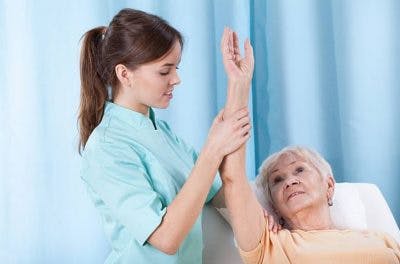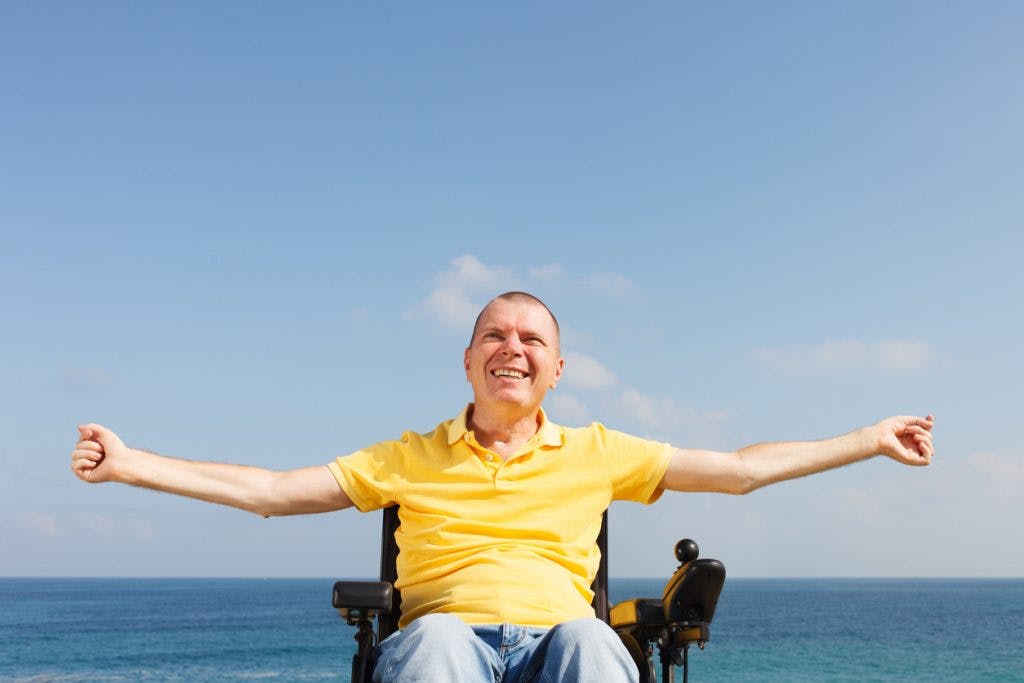When aging with cerebral palsy, individuals tend to be more susceptible to complications than individuals without disabilities.
Cerebral palsy is nonprogressive, meaning that the initial changes to the brain do not progress over time. However, secondary effects of cerebral palsy can worsen with age.
To help you understand the effects of aging with cerebral palsy, this article will discuss:
- Does cerebral palsy get worse with age?
- Potential complications
- How to prevent complications from worsening
Does Cerebral Palsy Get Worse with Age?
Cerebral palsy is a lifelong condition, and poor management can cause motor impairments to worsen with age.
Because cerebral palsy is a developmental disorder, it affects an individual’s movements starting very early in life. As children grow and develop, it’s likely that their movements will be affected and result in abnormalities.
For example, one of the most common effects of cerebral palsy is high muscle tone, also known as spasticity. When individuals have spasticity, the muscles remain involuntarily contracted. This pulls the body into abnormal postures or causes asymmetrical growth.
To prevent cerebral palsy from affecting an individual’s growth and quality of life, it is essential to prioritize early management of motor impairments and secondary conditions. The following section will discuss several ways cerebral palsy and its associative conditions can worsen with age.
Complications of Aging with Cerebral Palsy
Various complications can arise from cerebral palsy. In the absence of proper management, they can affect the individual both physically and psychologically.
Below, we’ll go over some of the most common complications associated with aging in individuals with cerebral palsy.
1. Spasticity

Spasticity refers to involuntary muscle contractions caused by the disrupted transmission of signals from the brain. This can cause stiffness, tremors, and pain.
While the brain damage that caused cerebral palsy does worsen over time, spasticity can. Having continuously contracted muscles for a long period causes an imbalance in the muscles, bones, and joints.
Children grow rapidly, and uneven forces on their muscles can lead to body distortions, contractures, or dislocations. This is why conditions like scoliosis and hip dislocations are highly prevalent among individuals with cerebral palsy.
2. Communication Difficulties

Although cerebral palsy primarily affects an individual’s movements, it can also lead to communication problems that make it difficult for them to interact with others. For example, speech, language, and hearing impairments are commonly associated with cerebral palsy and contribute to difficulties with communication.
As children grow older, impaired communication skills can affect healthy relationships at school, work, and other social environments. Additionally, they can lead to frustration or isolation that negatively impact an individual’s emotional wellbeing.
The most effective way to identify communication problems is through regular speech, language, and hearing examinations and/or treatment. A speech-language pathologist can teach individuals how to effectively communicate and develop their social skills. These skills can carry over with them as they age, allowing them to pursue more meaningful interactions with others in various environments.
3. Premature Aging & Fatigue

Individuals with cerebral palsy are also susceptible to premature aging due to compromised motor control, musculoskeletal strain, and increased levels of stress.
Living with impaired movement throughout one’s lifetime can add extra stress to both the mind and body. In fact, individuals with cerebral palsy require up to 3-5 times more energy to move around than those without a disability.
Body distortions can also add strain on certain organs or connective tissues. As a result, premature aging may be evident in the form of chronic pain and musculoskeletal problems.
4. Musculoskeletal Problems

Cerebral palsy can place excess pressure on your musculoskeletal system. Therefore, individuals with cerebral palsy tend to experience more rapid wear and tear of the body as they age.
Musculoskeletal problems associated with cerebral palsy other than spasticity, scoliosis, and hip dislocation (which we mentioned earlier) include osteoarthritis and osteoporosis.
Osteoarthritis refers to the wearing down of cartilage (the connective tissue that cushions bones at a joint).
Osteoporosis describes when the bones become weak, lose density, and become prone to fractures. It’s frequently caused by aging, poor nutrition, low mobility, and lack of weight-bearing.
Our bones are the structural framework of our bodies that enable movement and provide structural support. Weak bones can increase the risk and complications of falls and accidents as individuals with cerebral palsy age.
5. Mental Health

Aging with cerebral palsy not only affects the body but also the mind. Adults with cerebral palsy are more likely to experience depression or anxiety than those without a disability. This is closely linked to feelings of isolation.
Now that you understand the various complications individuals with cerebral palsy are at risk for as they age, the following sections will discuss prevention and management techniques.
Managing Cerebral Palsy in the Elderly
Early management is critical for minimizing complications and maximizing quality of life as individuals with cerebral palsy grow older. Here are some of the best practices to proactively manage cerebral palsy.
Get Routine Examinations
Increased age and motor impairments are two factors that place individuals at higher risk of developing complications. Even if you’re not experiencing worsening symptoms, preventative care is key for long-term health. Routine examinations help detect complications early and allow you to seek treatment before symptoms worsen.
Exercise Regularly
Especially because individuals with cerebral palsy are more likely to develop osteoporosis and osteoarthritis as they age, exercising is a must! Consistent weight-bearing can help reduce musculoskeletal problems caused by disuse and maintain muscle mass and bone density.
Additionally, stretching can help expand range of motion in the joints by lengthening tight muscles caused by spasticity.
It’s a good idea to work with a physical therapist to ensure you are using proper form and performing the exercises safely. Consistently exercising with poor form can place excess pressure on the joints, which can lead to further musculoskeletal problems.
Prioritize Nutrition
What you eat matters. Poor nutrition can cause your bones and muscles to weaken no matter how much you exercise. To strengthen the musculoskeletal system, individuals with cerebral palsy should focus on consuming adequate protein, calcium, vitamin D, phosphorus, and magnesium. Additionally, a nutrient-dense diet will help fuel the body for optimal functioning and increase energy to reduce feelings of fatigue.
Use Assistive Devices
Independence significantly affects one’s self-confidence and quality of life. Assistive devices can provide individuals with cerebral palsy the support they need to perform everyday tasks on their own as they age.
For example, adaptive utensils can help those with stiff wrists feed themselves, and reachers can allow those with limited fine motor skills to grab items. An occupational therapist can help you explore and trial various types of adaptive equipment to determine which options are best able to meet your daily needs.
Join a Support Group
Many individuals with cerebral palsy develop mental health disorders due to feelings of isolation. One of the best ways to feel less alone is to join a cerebral palsy support group. There, you can meet people who have gone through similar experiences as you and learn new ways to cope.
Understanding Cerebral Palsy and Aging
Cerebral palsy is a lifelong condition and as adults, it’s important to understand how your disability can affect your future.
The brain damage that caused cerebral palsy won’t progress, but the motor impairments that result from the brain damage can. As a result, aging with cerebral palsy can have a significant impact on one’s communication skills, energy levels, and physical and mental health.
Now that you’re aware of the potential problems that may arise when aging with cerebral palsy, be proactive and take preventive measures. Early intervention can help minimize the development of complications.











